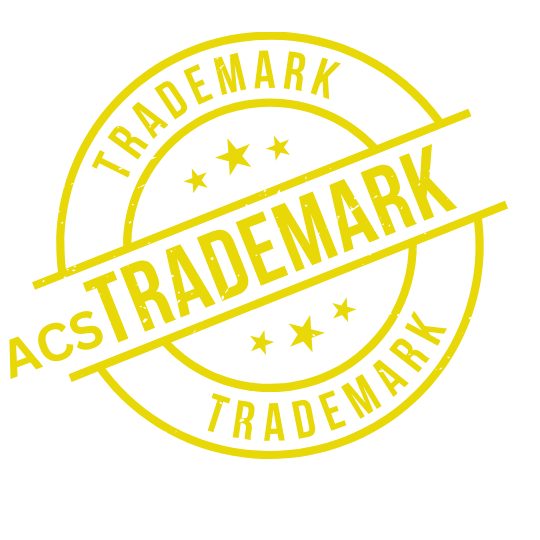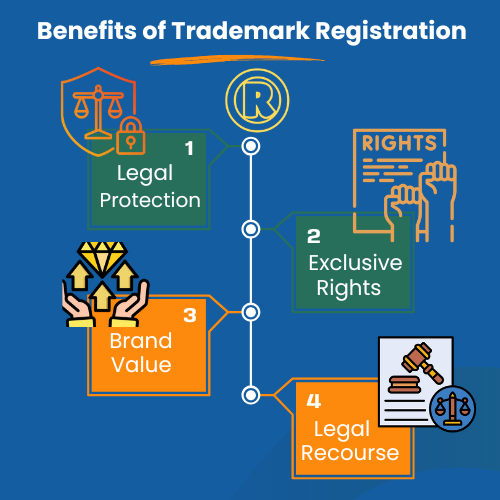- +91 9854020728
- acsguwahati@gmail.com
- Guwahati, Assam India
EXCELLENTTrustindex verifies that the original source of the review is Google. Good service.Trustindex verifies that the original source of the review is Google. Good Service for trademark serviceTrustindex verifies that the original source of the review is Google. Good consultancyTrustindex verifies that the original source of the review is Google. If you're looking to register a trademark, I highly recommend using ACS. They offer excellent service, their team is very courteous, and they respond promptly.Trustindex verifies that the original source of the review is Google. V nice behaviour v good workTrustindex verifies that the original source of the review is Google. Excellent service for trade mark serviceTrustindex verifies that the original source of the review is Google. V nice behaviour v good workTrustindex verifies that the original source of the review is Google. Excellent service for trade mark serviceTrustindex verifies that the original source of the review is Google. Quick & accurate with excellent services, happy to work with you.Trustindex verifies that the original source of the review is Google. Quick & accurate with excellent services, happy to work with you.Trustindex verifies that the original source of the review is Google. If you're looking to register a trademark, I highly recommend using ACS. They offer excellent service, their team is very courteous, and they respond promptly.Trustindex verifies that the original source of the review is Google. mannerism poor, dont know how to speak, very bad person, very bad behaviour for unknown persons.Trustindex verifies that the original source of the review is Google. Nice experience. They really helped me getting a trademark for an apparel brand 'SYBARITE'.Trustindex verifies that the original source of the review is Google. Very professional Service.Trustindex verifies that the original source of the review is Google. "Highly impressed with the expertise and professionalism of [ ACS] They guided me through the entire trademark registration process . Excellent communication and prompt responses to all my queries. I highly recommend their services to anyone seeking trademark registration assistance."Trustindex verifies that the original source of the review is Google. Good service.
Trademark registration of a brand in Chennai has become productive in modern business world. Trademark registration is imperative to prevent others from adopting the same brand name and logo. It has been witnessed that there are some brand that has been in use since long but has not acquired Trademark registration. In that case, the prior user has to entangle in legal battle to register the same and by that time all the reputation and goodwill earned gets wasted.
ACS has helped a lot of business to obtain trademark registration in Chennai. As trademark registration is a long process it requires proper guidance. Our experts provide proper guidance at the time of trademark registration.

In today’s competitive business landscape, a unique brand identity is crucial for distinguishing oneself from competitors and establishing a loyal customer base. Trademark registration plays a vital role in protecting this identity by safeguarding brand names, logos, slogans, and other distinctive signs.
Trademark registration is the process of securing exclusive rights to use a trademark, which is a unique sign or symbol that identifies a business or product. Registration provides legal protection against unauthorized use, infringement, and counterfeiting.
Trademark registration is essential for:


The application for registration of trademark must be made in the prescribed manner and filed along with the fee for trademark registration. Trademark application can be filed at one of the five Trademark Registrar Office having jurisdiction over the State or online. Registration for trademark in India is governed by the Trademarks Act, 1999 and the Trade Marks Rule 2017.
Individual, Single Firm, Partnership Firm, LLP, Company, Trust, NGO, Society, Hindu Undivided Family, government & semi government organizations.
Entity | Documents |
Individual | TM-48 (authorization of agent), Pan Card, Aadhar Card |
Single Firm | TM-48 (authorization of agent), Pan card, Aadhar Card, Trade License, GST certificate |
Partnership Firm | TM-48 (authorization of agent), Partnership deed, Firm pan card, MSME certificate (if available), word/logo/etc. whichever to be applied |
Limited liability partnership (LLP) | LLP deed, Incorporation certificate, LLP Pan card, MSME certificate (if available), word/logo/etc. whichever to be applied. |
Company | TM-48 (authorization of agent), Company Pan card, Incorporation certificate, MSME certificate (if available), word/logo/etc. whichever to be applied. |
The International Classification of Goods and Services, also known as the Nice Classification, is a system used to categorize goods and services for trademark registration purposes. It consists of 45 classes:
Goods (1-34)
Services (35-45)
This classification system helps trademark offices and applicants to:
– Identify the relevant class for a trademark application.
– Determine the scope of protection for a registered trademark.
– Conduct thorough searches for similar trademarks.
Entity | Documents |
Individual | TM-48 (authorization of agent), Pan Card, Aadhar Card |
Single Firm | TM-48 (authorization of agent), Pan card, Aadhar Card, Trade License, GST certificate |
Partnership Firm | TM-48 (authorization of agent), Partnership deed, Firm pan card, MSME certificate (if available), word/logo/etc. whichever to be applied |
Limited liability partnership (LLP) | LLP deed, Incorporation certificate, LLP Pan card, MSME certificate (if available), word/logo/etc. whichever to be applied. |
Company | TM-48 (authorization of agent), Company Pan card, Incorporation certificate, MSME certificate (if available), word/logo/etc. whichever to be applied. |
STEPS INVOLVED IN TRADEMARK REGISTRATION
1.TRADEMARK SEARCH
The first step in the trademark registration process is the trademark search which is required to ensure that your mark is not similar/deceptively similar to any other mark to avoid conflicts in future.
2.TRADEMARK FILING
After successful search, trademark is filed in the form TM-A, with attached documents like TM-48, Affidavit, Invoice, MSME certificate etc. either offline or online. Online trademark registration for brand name and logo is quick and effective. In case of an online filing, acknowledgement receipt with application number is instantly generated on the government portal. After receiving acknowledgement, one is eligible to use TM symbol beside the brand name.
3.FORMILITIES CHECK PASS
If the basic requirements of the trademark application are complied with like filing of TM-A, power of Attorney, user document, Affidavit, proper fees, translation and transliteration of the mark etc. the status reflects “Formalities check pass”, otherwise the status shows “Formalities check fail”. If status is “check fail”, all the objections to be complied within the prescribed period to keep the application alive.
4.VIENNA CODIFICATION
This stage of application for device mark only. The moment a logo/device/artistic work is filed, same is send to Vienna codification process to be conducted by Trademark Registry. The main purpose of such an exercise is to prevent duplication of the logo/device etc.
5.MARK FOR EXAM
In this stage, trademark application is assigned to the examiner, who either issue examination report or accept the application. If the application is accepted, the same is published in the Journal for objection.
An examination report of a trademark is issued by an Examiner on the following grounds:
Whenever an examination report is issued, appropriate reply to be submitted within one month to keep the application alive.
6.OBJECTED
In this stage, application is kept waiting for hearing. Application which reply are submitted generally show the status “Objected”. The applicant is required to submit Affidavit, user documents etc. before the hearing.
At the time of hearing, hearing officer will hear the arguments of applicant/attorney/agent and pass necessary orders accordingly.
7.ACCEPTED & ADVERTISED
If the hearing officer accept the trademark application, the status will reflect “Accepted”. After acceptance, the trademark is published in the Trademark Journal published weekly and contains the details of all trademark that has been accepted by the department. The waiting period of a trademark in the Journal is 120 days. During this period, third party can raise objection against a trademark by filing an opposition within the Journal period.
8.REFUSED
If the hearing officer for any reason, do not accept the application, it is refused and status will reflect “Refused”. There is scope for review of the refusal order before the Registrar of Trademarks if sufficient grounds exist.
9.OPPOSED
In case, after the advertisement of the trademark in the Journal, a third party files an opposition to the registration of the trademark within the 4 months from the date of advertisement then the trademark application status in the Indian trademark registry website will show as ‘Opposed’.
A third party usually files an opposition when there is a similar trademark published in the journal or if the trademark is alleged to be deceptively similar.
The trademark status changes from “Accepted & Advertised” to “Opposed”, after a notice of opposition is filed by an opponent (third party). The notice is served on the applicant which states the ground of opposition on which the opponent rely.
After receiving the notice, applicant is required to file counter statement within 2 months from the date of receipt of the notice of opposition. If no reply is submitted within 2 months by the applicant, the status changes from “Opposed” to “Abandoned”.
10.WITHDRAWN
The status of a trademark application is reflected as “Withdrawn”, when the applicant voluntarily files an application before the Registrar of Trademarks to withdraw the trademark.
11.REMOVED
The status of a trademark is reflected as “Removed”, when the Trademark is permanently removed the trademark registry. The removal can be for various reasons like non –renewal of the trademark, non-use of trademark, trademark remaining wrongly in the registry etc.
12.REGISTERED
When there is no objections or opposition against a trademark within the stipulated period of Journal publication, the trademark is registered, granting the owner the exclusive rights to use the mark with symbol ® with the specified goods or services.
13.RENEWAL
Trademark registration is valid for 10 years and can be renewed indefinitely. It is safe to renew the trademark before expiry to avoid penalty.
Trademark registration is a vital aspect of brand protection and business growth. By understanding the importance, benefits, and registration process, businesses can secure their brand identity and reap the rewards of exclusive rights. Remember to conduct thorough searches, file applications promptly, and maintain registration to ensure continued protection.
A Trademark is a type of Intellectual Property that protects brand names, logo and other marks associated with a particular product or company.
Name and address of the applicant, Logo, Power of Attorney signed, Udyam Registration- in case of MSME business, Incorporation Certificate- In case of Company or LLP.
under the New Rules, an applicant is provided with the opportunity to request for expedited processing of trademark application. This can be achieved by paying fees of Rs 20,000/- (in case of Individual/Startup/MSME) and Rs 40,000/- (in other cases).
It is possible to register a trademark before starting a business.
No. trademarks are territorial; trademark registered in India is valid in India only.
Trademark registration is valid for 10 years.
Yes, if you want to use the brand name or logo.
A trademark filed through Attorney is safe as they are expert in the field and can tackle any situation that may arise during the registration process.

Agarwal Consultancy Services (ACS) is a Proprietorship firm which is presently situated at Artfed Building, 4th Floor, RHHMS, A.K.Azad Road, Rehabari, Guwahati,Assam,Pincode -781008
© Copyright 2005-2022 © Agarwal Consultancy Services. All Rights Reserved.